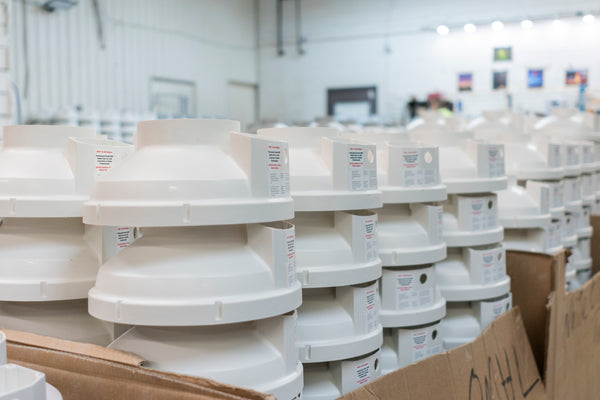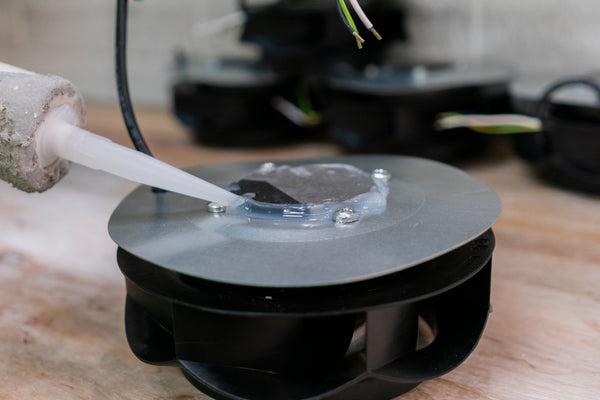
What Are VOCs and How To Safely Remove Them
Volatile organic compounds, commonly known as VOCs, represent one of the most significant yet overlooked threats to indoor air quality. These chemical substances evaporate easily at room temperature and continuously release invisible vapors into your living spaces. Understanding VOCs becomes crucial when you consider that most people spend most of their time indoors, where VOC concentrations often exceed outdoor levels by two to five times.
VOCs encompass a broad category of carbon-based chemicals that transition from liquid or solid states to gas form under normal indoor conditions. The “volatile” designation refers to their tendency to evaporate quickly, while “organic” indicates their carbon-containing molecular structure. These compounds originate from numerous household products and materials, creating a complex mixture of airborne chemicals that impact both immediate comfort and long-term health.
The significance of addressing VOCs extends beyond simple air quality concerns. These compounds contribute to various health symptoms and can interact with other indoor pollutants, creating even more problematic secondary compounds. Recognizing their presence and implementing effective removal strategies transforms your indoor environment into a healthier, more comfortable space for daily activities.
Common Sources of VOCs in Your Home
Household products represent the primary contributors to indoor VOC concentrations. Cleaning supplies release significant amounts of formaldehyde, ammonia, and chlorinated compounds during use and storage. Paint and paint thinners continue emitting VOCs for months after application, with oil-based products producing higher concentrations than water-based alternatives. Adhesives, caulks, and sealants used in construction and repairs release various organic solvents as they cure and age.
Personal care products contribute substantially to daily VOC exposure. Hair sprays, perfumes, nail polish, and cosmetics contain alcohols, acetates, and synthetic fragrances that evaporate continuously. Air fresheners and scented candles release complex mixtures of synthetic compounds designed to mask odors rather than eliminate their sources.
Building materials and furnishings create long-term VOC sources within homes. Carpets, especially those with synthetic backing or padding, emit formaldehyde and other compounds for extended periods. Pressed wood products, including particleboard and plywood, release formaldehyde as binding resins break down over time. New furniture, particularly pieces made with composite materials or foam cushioning, can emit various organic compounds for weeks or months after purchase.
Stored fuels and automotive products often contribute to VOC levels in basements and garages. Gasoline, motor oil, and automotive fluids release benzene, toluene, and other harmful compounds. Even small quantities of these materials can significantly impact indoor air quality when stored in attached garages or basements connected to living spaces.

Health Effects of VOC Exposure
Short-term VOC exposure produces immediate symptoms that many people experience daily without recognizing the cause. Headaches often develop after spending time in areas with high VOC levels, particularly in newly painted rooms or spaces with strong chemical odors. Eye irritation occurs when VOCs contact sensitive mucous membranes. Respiratory symptoms such as throat irritation, coughing, and difficulty breathing can develop within hours of exposure to elevated VOC levels.
Neurological effects from acute VOC exposure include dizziness, confusion, and difficulty concentrating. These symptoms typically resolve after leaving contaminated environments, but repeated exposure can intensify their severity and duration. Some individuals experience nausea and fatigue when exposed to specific VOCs, particularly those with strong odors or high concentrations.
Long-term exposure to certain VOCs raises more serious health concerns. Formaldehyde, classified as a known human carcinogen, increases cancer risk with prolonged exposure. Benzene exposure can cause leukemia and other blood disorders. Toluene can affect the central nervous system, while xylene may impact liver and kidney function over time.
Children and individuals with respiratory conditions face heightened risks from VOC exposure. Developing respiratory systems process these compounds less efficiently, potentially increasing susceptibility to asthma and other breathing disorders. Pregnant women should particularly avoid high VOC environments, as some compounds can affect fetal development.
Identifying VOCs in Your Home
Detecting VOCs requires both sensory awareness and systematic investigation of potential sources. Strong chemical odors often indicate elevated VOC concentrations, particularly in newly renovated spaces or areas where chemical products are used or stored. However, many VOCs produce little to no detectable odor, making their presence difficult to identify solely by smell.
A visual inspection helps identify potential VOC sources throughout your home. Check areas where cleaning products, paints, and solvents are stored, as containers can leak or emit vapors even when tightly sealed. Examine building materials for signs of off-gassing, such as strong odors from new carpets, furniture, or recently installed materials. Look for moisture problems that might promote mold growth, as mold produces various organic compounds that contribute to indoor VOC levels.
Professional VOC testing provides accurate measurements of specific compounds and overall concentrations. Indoor air quality specialists use calibrated instruments to detect and quantify individual VOCs, creating detailed profiles of your home’s air composition. This testing proves particularly valuable when health symptoms suggest VOC exposure but sources remain unclear.
Home VOC test kits offer a more affordable alternative for basic screening. These devices typically use passive sampling methods to collect air samples over specific time periods. While less comprehensive than professional testing, home kits can identify elevated VOC levels and help prioritize remediation efforts.

Effective VOC Removal Strategies
Ventilation
Ventilation represents the most fundamental approach to VOC reduction. Natural ventilation through open windows and doors creates air exchange, diluting indoor VOC concentrations with fresh outdoor air. Cross-ventilation, achieved by opening windows on opposite sides of your home, maximizes air movement and accelerates VOC removal. Mechanical ventilation systems, including exhaust fans and whole-house ventilation systems, provide consistent air exchange regardless of weather conditions.
Targeted ventilation addresses specific VOC sources more effectively than general air circulation. Kitchen and bathroom exhaust fans remove VOCs generated during cooking and personal care activities. A radon ventilation fan can also help reduce basement VOC concentrations by creating negative pressure that draws contaminated air from lower levels and vents it outdoors.
Air Purification
Air purification systems equipped with activated carbon filters effectively capture and remove many VOCs from indoor air. These filters use porous carbon materials that adsorb organic compounds, preventing their recirculation throughout your home. High-efficiency particulate air (HEPA) filters effectively capture particles but are less effective against gaseous VOCs, making carbon filtration essential for comprehensive VOC control.
Source Elimination
Source elimination provides the most direct approach to VOC reduction. Replace high-VOC products with low-VOC or VOC-free alternatives whenever possible. Choose water-based paints and finishes instead of oil-based products. Select furniture made from solid wood rather than pressed wood products containing formaldehyde-based adhesives. Use natural cleaning products or make your own using simple ingredients like vinegar and baking soda.
Temperature and Humidity Control
Temperature and humidity control influence VOC emission rates from various sources. Higher temperatures accelerate VOC evaporation, while lower temperatures reduce emission rates. Maintaining moderate humidity levels prevents conditions that promote mold growth and subsequent VOC production. Air conditioning systems that control both temperature and humidity help minimize VOC generation while improving overall comfort.
Storage Practices
Storage practices significantly impact VOC concentrations in living spaces. Store paints, solvents, and cleaning products in detached garages or well-ventilated areas away from living spaces. Use airtight containers for products that you can’t relocate. Dispose of old or unnecessary chemical products through hazardous waste collection programs rather than storing them indefinitely.
Creating a Healthier Indoor Environment
Reducing VOCs requires ongoing attention to product choices, maintenance practices, and environmental conditions. Regular cleaning with low-VOC products prevents the accumulation of dust and organic matter that can harbor VOCs. Prompt attention to water leaks and moisture problems prevents mold growth and associated VOC production.
When renovating or redecorating, plan projects to minimize VOC exposure. Schedule painting and flooring installation during moderate weather when natural ventilation can effectively remove emissions. Allow adequate curing time for new materials before occupying treated spaces. Consider a temporary relocation during major renovations involving significant VOC sources.
Consumer awareness drives market demand for healthier products. Look for certifications such as GREENGUARD or low-VOC labels when purchasing furniture, building materials, and household products. These certifications indicate that products have required testing and meet specific standards for chemical emissions.
Taking Control of Your Indoor Air Quality
Understanding and addressing VOCs transforms your home into a healthier environment for daily life. The combination of source reduction, effective ventilation, and appropriate filtration creates comprehensive protection against these invisible pollutants. Regular monitoring and maintenance of your VOC reduction strategies maintains their effectiveness over time.
Small changes in product selection and home maintenance practices can significantly improve indoor air quality. Each step toward reducing VOC sources and enhancing air circulation contributes to a more comfortable, healthier living environment. Your investment in VOC reduction pays dividends in improved comfort, better health, and enhanced quality of life for you and your family.





